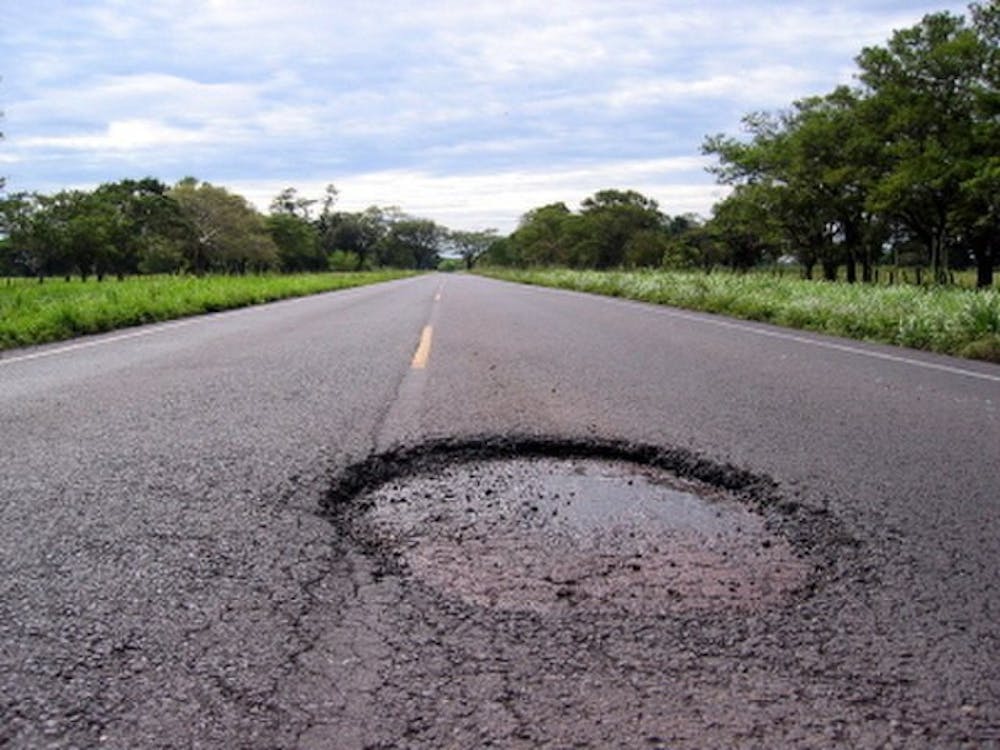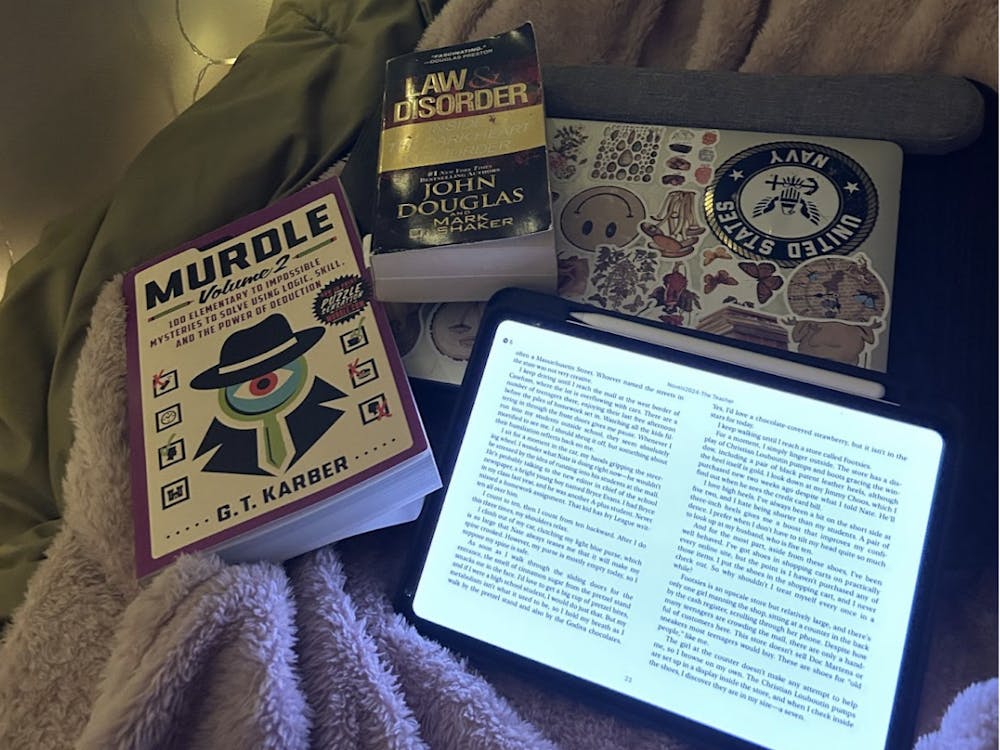Do you remember move-in day? Do you remember the pit in your stomach and the daydreams you had as you stared from the car window envisioning the next four years? I remember sitting in the backseat texting my roommate “I'm close” as we passed the “Maryland Welcomes You!” sign. However, off the highway, my daydreams were disrupted by a sudden and violent shaking of the car. My mother began to swerve around an army of potholes that dotted the roads in what could have been a real-life Fast and Furious.
"This is Baltimore?" she asked, shocked. "This is Hopkins?”
She turned back at me for a response, but I had no idea what to say.
Now, after three and a half years of exploring how a predominantly white institution functions within a predominantly Black city, I can answer her questions. That was Baltimore, but it was not Hopkins.
Each city’s streets tell a different story. New York City’s potholes cry from overuse, L.A.’s smooth pavement boasts the glamour we’d expect of Hollywood. However, Baltimore’s roads tell a more sinister tale, one of crumbling infrastructure, environmental racism and a strained relationship between Hopkins and the city’s residents. The story starts, as many Baltimorean stories do, with what scholar Lawrence T. Brown calls the Black Butterfly and the White L.
Hypersegregation practices in Baltimore began over 100 years ago. With legislation outlawing segregation in the 20th century, the city had to become inventive in devising ways to maintain the boundaries between Black and white residents. Realtors, city leaders and bank lenders feared integration would sink real estate prices and jeopardize the wealth of white homeowners, so these elites determined who could live where and how resources would be allocated among the city’s residents — unequally.
These decisions left a legacy of racial division and public disinvestment that has affected generations of Black Baltimoreans, trapping them within the Black Butterfly wings of East and West Baltimore, while their white counterparts reside within the L-shaped stripe in the middle. It's the reason why epicenters of poverty sit within walking distance of charming suburbs, why vacant houses deteriorate just miles away from growing high-rises in Fells Point and why smooth roads connecting the Black Butterfly’s wings and the white L are so hard to find.
Look above Baltimore’s deepening potholes, and one can see the physical manifestation of racism in the form of failing infrastructure. Take the Highway to Nowhere, also known as Route 40. It was commissioned 50 years ago to be an extension of Interstate 70 but was canceled midway through construction. Today, this 1.39-mile strip of pavement stands as a derisive symbol of the 62 businesses, 971 homes and 1,500 Baltimoreans that were uprooted for its creation. And yet, it is still just a single chapter in a novel of infrastructural failings that have displaced minorities.
In the past year alone, three sinkholes have opened in Baltimore and swallowed the homes of unsuspecting Baltimoreans. The most conspicuous sinkhole was caused by the neglect of a 115-year-old storm drain that collapsed due to increased rain, a trend forecasted to continue due to the consistently rising temperatures. The victims filed a lawsuit, expecting to be reimbursed for their losses, but the city claimed they owe the residents nothing. This lackluster response begs the question: Who will support Baltimoreans if their own government casts them aside? Baltimoreans pay taxes to strengthen public facilities expecting that, if tragedy strikes, a safety net awaits their fall. But, in this case, the city has abandoned them, leaving them to tumble through an abyss with a broken parachute.
And then, there is Hopkins — the white, nonprofit knight that doesn’t pay taxes to the city of Baltimore. Hopkins lies within the white L, an area that has historically received more state funding than the Black Butterfly. The fact that a lack of economic power begets a lack of political power explains why predominantly Black areas, areas with no ties to the University, face higher rates of displacement and destruction.
Mayor Brandon Scott put it best when he said, "In America, the sound of construction generates feelings of progress, prosperity and opportunity. However, this same sound in one America, the one that we're standing in right now in West Baltimore, often provokes fear of displacement in inequality."
I wake every day to the ceremonious drilling of the Hopkins Student Center, and I can’t help but envy the incoming classes, the resources they’ll have that I didn’t. And yet, there is something to be said by the fact that all I feel is envy, not fear. The same drilling noises five miles away strike anxiety in the hearts of vulnerable Baltimoreans who can’t be sure whether construction will create new employment opportunities and safer neighborhoods or inflate prices and destroy community buildings.
Hopkins’ role is not actively malevolent, but it is willfully ignorant. The hand of Hopkins demolishes existing structures rather than restoring them and integrating the institution within the local community. The East Baltimore Development Initiative (EBDI) is an ongoing revitalization of the East Baltimore, a project that President Ronald J. Daniels has persistently championed. Premised on clearing vacant homes to spur equitable economic development, the harsh reality of the initiative has been two decades of irregular development, the abrupt displacement of approximately 800 Black and brown families and subsidies for Hopkins employees to settle in East Baltimore.
“EBDI has taken control of the community, and the community is no longer ours; the community belongs to them,” stated Donald Gresham, the president of Baltimore Redevelopment Action Coalition for Empowerment.
By replacing disinvested areas of Baltimore rather than reconciling the city’s divisions, Hopkins heightens the disparity between the Butterfly’s center and wings. This disparity can be felt in the tremors of your car traveling up Greenmount Avenue and can be seen in the transformation of homes as you walk along North Charles Street. It is the paradox of Hopkins: a seemingly ubiquitous institution that has isolated itself from the city crumbling around it.
On the eve of my departure from University, I navigate around the same potholes my mother did, not nearly as fast but a bit more furious. I regret not taking a more active role in the development of the community around me. As Hopkins students caught up in our own endless ambitions, we are often naïve to the systemic forces hindering Baltimore’s growth, yet we are quick to condemn its boarded homes and decaying architecture. History has proven time and time again that judgment paired with ignorance sparks regression rather than productivity. Perhaps — if we took initiative and investigated the impact of Hopkins beyond its self-proclaimed accolades, if we recognized systemic racism as not just a buzzword but an omnipresent force of subjugation, if we took action in the form of education and outreach — the road to Hopkins would be the same as the road within, smooth and level.
Christal Oji is a graduating senior from Bridgewater, N.J. majoring in Neuroscience and minoring in Economics on the pre-med track.





